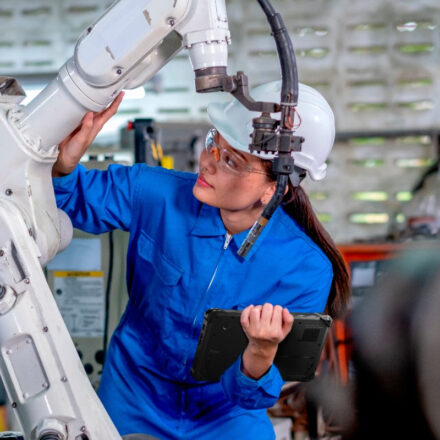This blog post was co-authored by Scott Dixon, Advanced Manufacturing Technology Leader, Ernst & Young LLP.
For all the talk about Industry 4.0—not to mention the hundreds of billions of dollars a year manufacturers invest in digitalizing their operations—a sad truth stays hidden: Too many initiatives fall short in delivering near-term value and establishing a long-term future for businesses.
That’s unfortunate because, in our experience, digitalization can have huge payoffs in efficiencies, innovation, agility and market leadership—if done with the right partners. In advising hundreds of manufacturers worldwide, Dell Technologies and EY teams have found their digitalization journeys often encounter three big hurdles:
-
- How do I start? In these cases, the costs of aging infrastructures, including unplanned downtime, increasing maintenance and repairs, and retiring workforces, can undermine profitability and competitiveness. Disparate systems and data silos likely hobble operations further. Additionally, they incur opportunity costs from suboptimal efficiencies, quality and market responsiveness.
Although they recognize the importance of upgrading their plants, these manufacturers must also keep production on schedule. Besides, Industry 4.0 planning and execution need time, capital, know-how and an appetite for risk. Finding qualified, outside experts to help can itself be a formidable task.
-
- How do I scale? With plant digitalization started, many manufacturers may feel stuck in getting their proverbial flywheels turning. Perhaps adoption and utilization of their technology investments are less than expected. Integration with existing assets could also be an obstacle.
Or, even if a new system pilot succeeds, how to deploy it consistently and repeatably across an entire plant or fleet of plants isn’t clear. Large, distributed organizations may also suffer the “not invented here” syndrome, often masking a functional or local culture’s resistance to change.
-
- How do I accelerate? Among manufacturers that are well into digitalization and seeing clear payoffs, some may feel progress is stalling. Maybe improvements in their metrics for overall equipment effectiveness (OEE) have plateaued. They may want to deploy additional technologies, such as edge computing, robotics, augmented reality and artificial intelligence, but they’re uncertain how to expand their digital capabilities without putting their gains at risk.
To help manufacturers overcome the challenges of answering these questions, Dell Technologies and EY teams have created an innovative Manufacturing Throughput-as-a-Service (MTaaS) solution.
Dell Technologies provides the technology infrastructure fundamental for the MTaaS offering, especially at the edge of the shop floor. Dell Technologies also develops reference architectures that certify the solutions of the EY manufacturing technology partners—independent software vendors (ISVs)—on Dell Technologies Edge Solutions, accelerating time to market. This helps de-risk each ISV’s respective solution, accelerate its implementation and deliver its expected value.
Together, EY, Dell Technologies and the ISV solution providers remove the complexity of having multiple vendors involved. This ecosystem of leading technology partners now has a shared accountability—to both the manufacturer and each other—that ensures their solutions’ interoperability and, in combination, the manufacturer’s desired results.
With MTaaS, the burden of CapEx spending for hardware and software is shifted to OpEx with the as-a-Service model. This lowers the CapEx burden on the plant and keeps your technology up to date with updates and upgrades.
Lifting the Burden, Simplifying Complexity
Access to an evolved, single-source partner ecosystem with this MTaaS solution lifts the enormous burden business leaders face of finding, qualifying and coordinating the complex tasks of their own partners. It also lessens the risk of potential high-cost digitalization failures.
The MTaaS technology reference architecture is comprehensive and highly secure. It vertically extends from the plant floor to enterprise management’s top floor. Horizontally, it spans:
-
- Data sources of every kind, including field-level sensors and actuators to equipment, their industrial control systems and manufacturing execution and enterprise resource planning systems.
- Data ingestion at the edge, with data gateways, hubs, aggregators and historians, plus the networks and Industrial Internet of Things (IIoT) communication protocols linking them.
- Data processing and storage, both on-site and in the cloud, each used as most appropriate and cost-effective.
- Data analytics and business intelligence, delivering data-driven insights in real time for better, faster and more informed decision-making and even predictive alerts.
- Visualization, at operational, supervisory, engineering and management levels, which assists with closed-loop digital twins for product, process and performance simulations.
- External dimensions, including supply chain management and optimization, secure ecosystem connectivity for technology partners and OEMs, and automated regulatory compliance.
To make MTaaS cost-effective, we help manufacturers reimagine their business approach for procuring and investing, focusing on outcomes while easing the upfront CapEx to get started. We also advise on needed initiatives for organizational change management to foster faster adoption and utilization.
Facilitating Co-creation and Proofs of Concept
By assessing specific manufacturing challenges, we can test tailored MTaaS solutions in a working environment at Chicago’s EY Digital Operations Hub at MxD (Manufacturing x Digital). This facility allows manufacturers to experience pre-certified solutions and validate the business results expected from their digitalization investments.
By taking full advantage of our MTaaS model, subsequent proofs of concept can save weeks, even months, from digitalization journeys. And that’s just the start of support by EY, Dell Technologies and our other ecosystem partners, which covers the entire MTaaS lifecycle and goes well beyond patches and technology upgrades.
In the years to come, as new technologies emerge and contexts change, Dell Technologies and EY teams will evolve our respective development roadmaps and align those with practical deployment strategies for MTaaS user operations. Meanwhile, manufacturers can enjoy a large measure of confidence in their digital investments as well as the compounding value of their returns in more innovations, greater profitability and a sharper competitive advantage.


